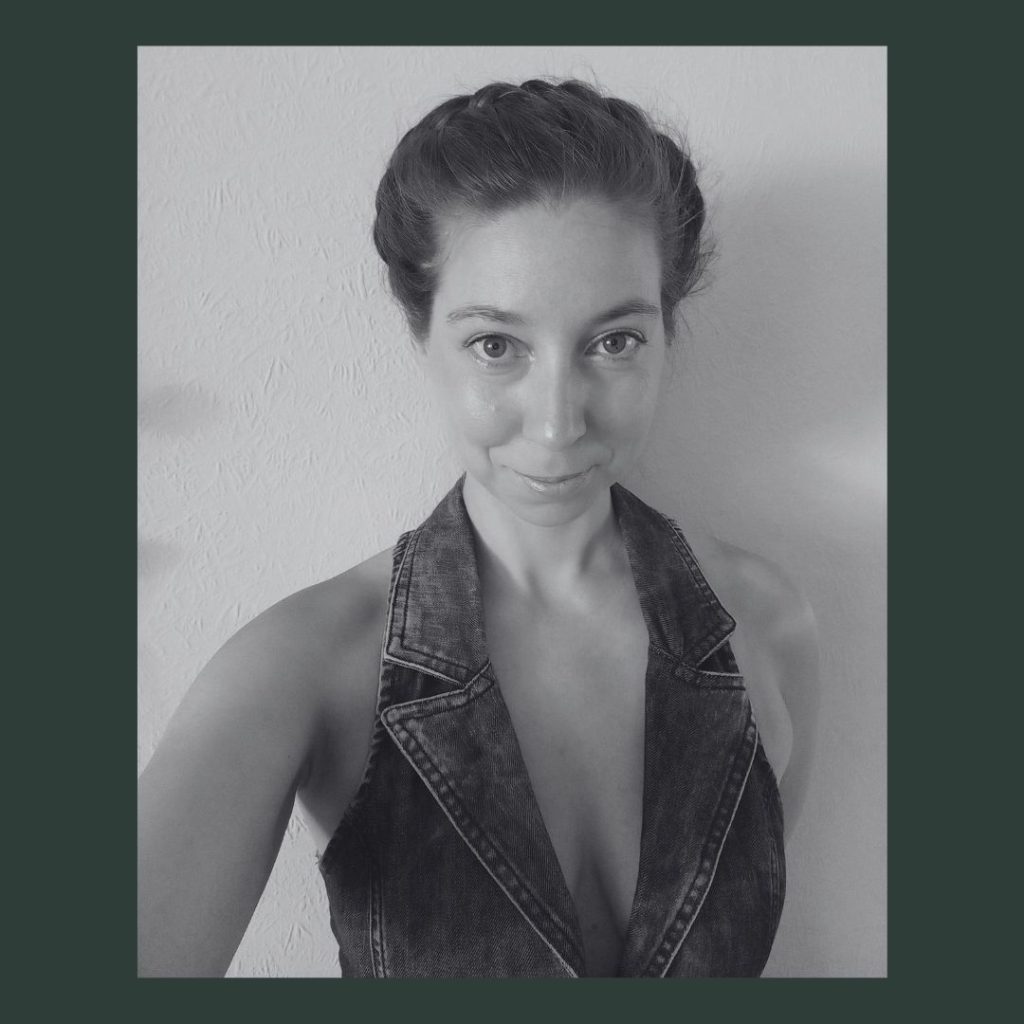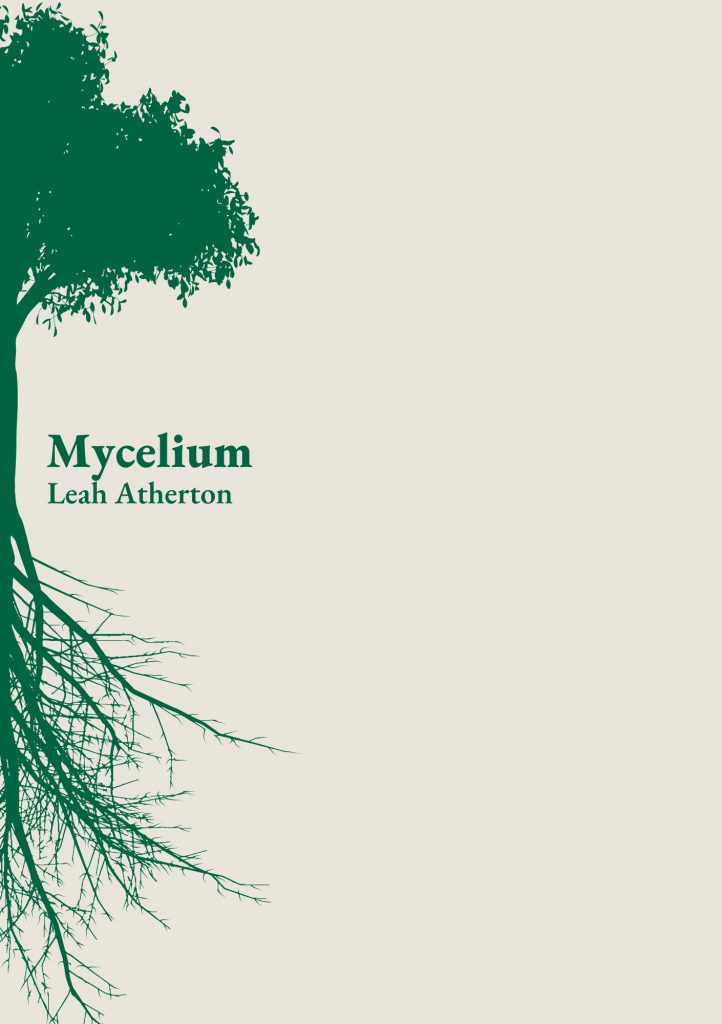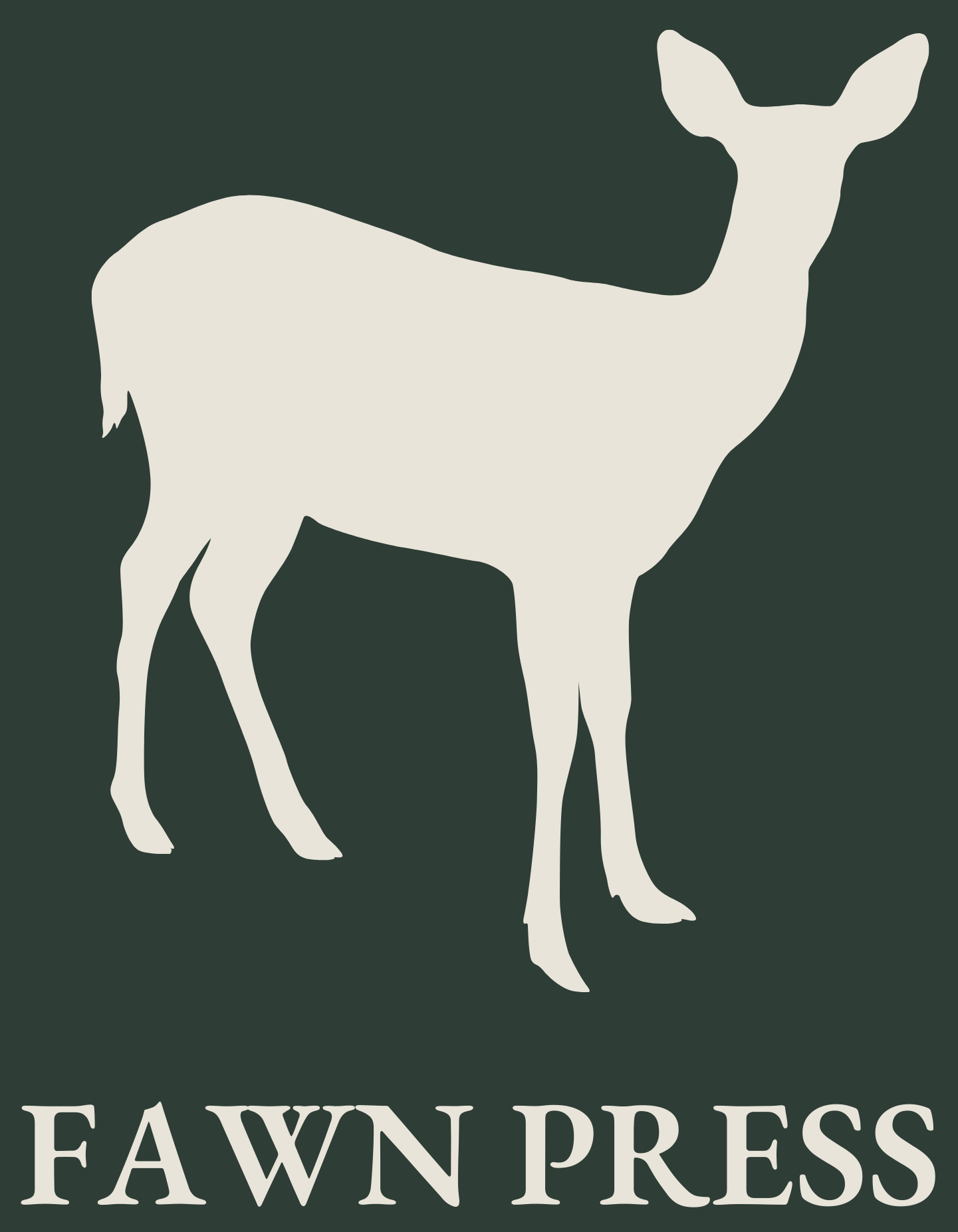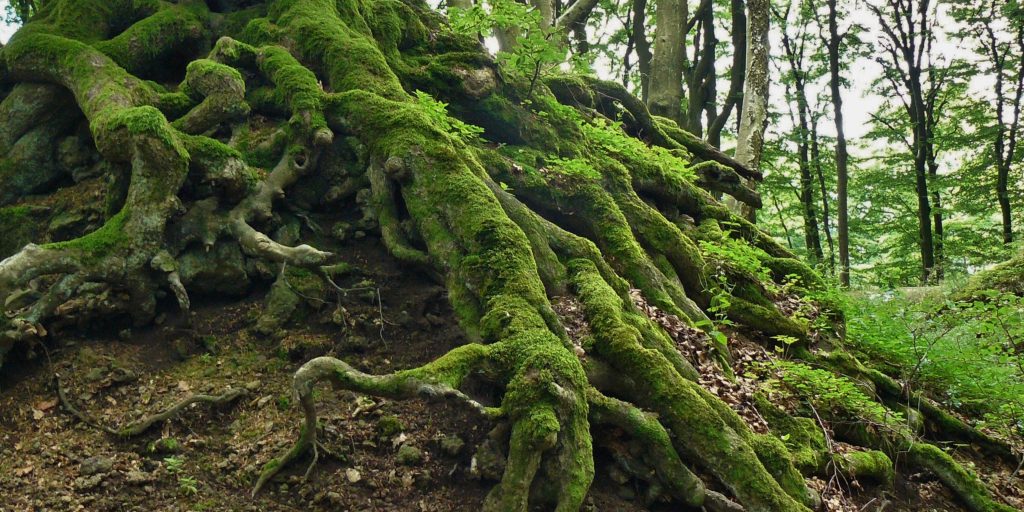Salomée Lou sits down with upcoming Fawn Press pamphlet poet Leah Atherton, to talk about witches, nature as a tool for healing, queerness, and of course, her upcoming poetry pamphlet, Mycelium, which you can preorder here.

How would you describe Mycelium if you had to describe it in 5 words? How would you talk about it to someone who has not read it yet?
Swampy. Witchy. Queer. Forest in Summer.
To me, this book is like a sticky, humid feeling that you get on an August day towards the end of summer. Almost like your skin is too hot to be wearing. The feeling in the air just before a storm is coming. Muggy.
Witches are a big theme in the collection. The book is punctuated by a series of poems called The Hedge Witch: would you like to tell us more about that?
This recurring character came because to me, it represents this feeling of always being on the outskirts of a community. The witch always fulfills a function within whatever community she’s in. But she’s not of that community, never fully accepted, but is necessary for its function. It came to me as the overwhelming sense that all the things that I would describe myself, the labels I would use, I always kind of sit not fully comfortably in them. For example, I’m British, but I wasn’t born here. I don’t really fit in with the other designations or my other citizenships. I’m Jewish, but not Jewish enough, because I’m not practicing, I don’t go to the synagogue, even though I am reconnecting with this part of myself. I’m queer, but married to a man, so in that sense, I’m invisible. I mean, if you’re bi, you’re invisible by default. And there’s always that sense of not wanting to take up space, that you’re not entitled to. Even within the queer community, there’s always the privilege that goes with it. Also, I’m a poet, but I’m not a full-time poet, being a poet is not the only thing that I am, I am also a coach, and a runner. I find that in every community I’m in I fulfill a function. For example, within the poetry community, I’ve sort of ended up being people’s adopted big sister. In the running community, I’ve ended up being a guide and a mentor.
The Hedge Witch was sort of a fictionalised and folklorised version of myself. It was freeing to weave a part of me into a fictional version of myself. She’s on the outskirts,the townsfolk don’t really talk to her. It was a way to explore ideas about what it means to be on the margins. The Hedge Witch is the guide that takes you through the collection.
From a quote I found online, you explain that you have two different ways of processing life events and emotions: one is running through it, the other is writing through it. What is the relationship between running and writing to you?
They are inextricably tied together. With the running that I do, I tend to be outside on the trails, following a footpath, sometimes fighting my way through nettles. I am out for several hours in natural spaces, noticing and seeing things. I stop and snack on blueberries, I notice the seasons and patterns more. When you run or walk for a long time, essentially, you are performing that repetitive physical motion and it kind of lulls you into this state where you can process things emotionally. You know that feeling in your stomach, when you’re feeling a big emotion, whether it is positive or not, it’s still a release. You’re doing something to move that emotion. The repetitive motion is kind of lulling you into this state of quietness and it’s even a meditation, it lulls your brain to that sense of being able to see things for what they really mean to you. When I go for a run, I am out for hours, and I developed this ability to observe things and link my emotions to the natural world around me and metaphors come from that.
I’d think of the river and where it comes from and does it know where it’s going? And the trees at the edge of this forest, I’m wondering if they communicated with other trees to let them know that I’m coming.
Reading Robert McFarlane was an absolute revolution to me. It taught me to stop being scared of getting lost when I go out for a run. It’s this idea that every footpath has by definition a purpose, and it’s got to connect to things of significance, so even if you think you have no idea where you are, if you follow it, eventually, it will spit you out somewhere you need to be.
A lot of it has to do with language as well. Particularly indigenous american languages, for example, their word for history is “walk”. The idea of walking and movement as a way to tell a story.

Do you carry a notepad with you on your trails?
Sometimes, if I remembered, I’d bring one with me. Sometimes it’s just the kernel of an idea and I’ll sort of worry at it. You know the feeling when you’ve got something stuck between the teeth, you can feel it and you don’t know what it is yet but you know there’s something. And then sometimes I end up being the crazy person like repeating a line over and over to myself.
In my first collection, I wrote about half of it on a run or immediately after a long multi-day run and this one, it felt less urgent. My first collection was a lot of running in new places and moving through new environments: I was in my 20s and it was messy. I had a lot of big emotions to process through it.
This second one is the sense of running or walking regularly through the forest. Watching the season’s turn and it feels a lot more grounded at the same time.
Your collection is haunting and it made me think of asking you this last question: if you could meet one dead poet, who would it be and why? What would you ask them?
I feel so basic for saying this but Keats. I adore romantics. They make sense to me. And I think it’s because the romantic poetry movement, just like the pre-raphaelite art movement, came out of a resistance to and a rejection of this idea that we are only meant to wake up work until we die and pay taxes. In fairness, not just Keats, but that whole community in the Lake District. Either Keats or maybe Edward Thomas because, in both cases, they learned and were inspired through movements and being still and being present with their surroundings and allowing their surroundings to help them inform how they are actually feeling about something. So, they process their emotions through the metaphor of the natural world and that feels very natural to me, so I would love just kind of enthused about places with them. German romantics were so important too. It’s that sense of processing the emotions and the experiences that you have through being present with the natural world. I would love to be able to pick their brains about that.
You can follow Leah on Instagram here

